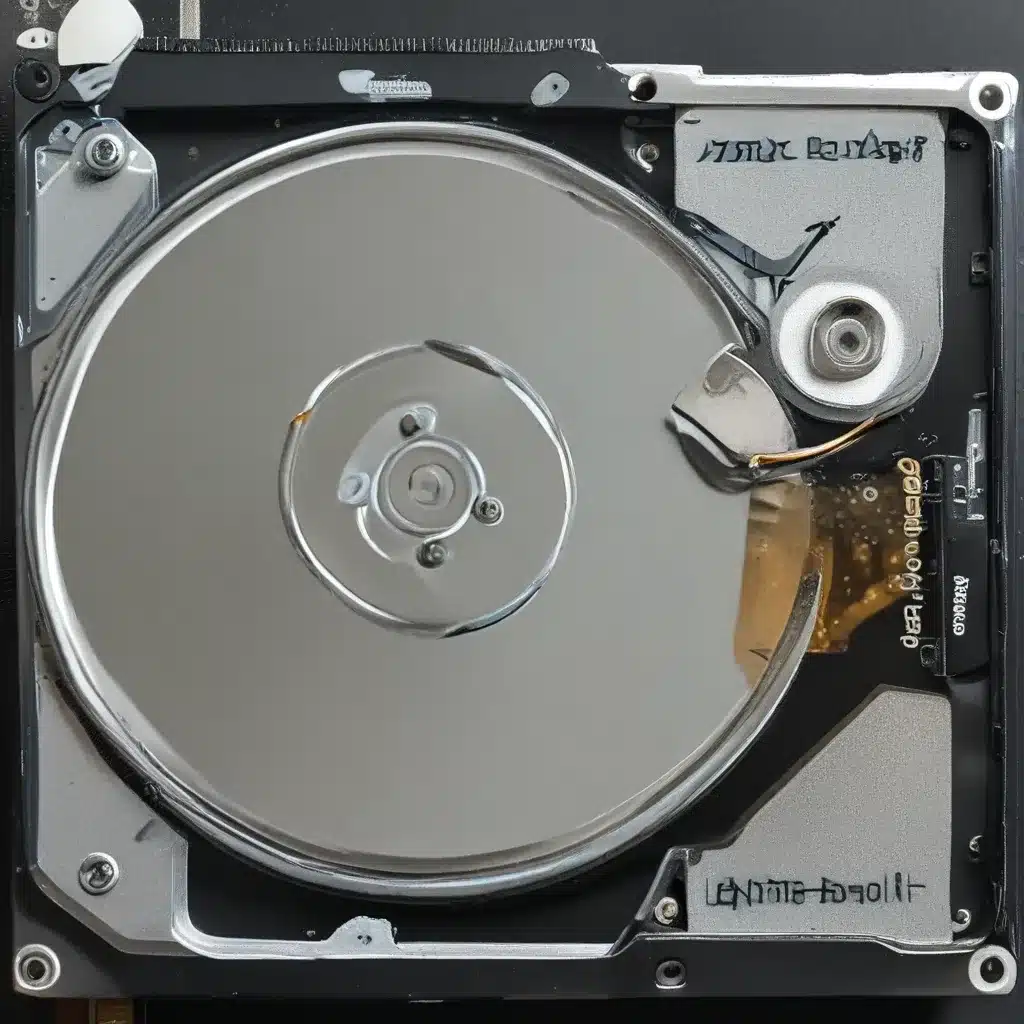
The Day My Hard Drive Went AWOL
Have you ever had that sinking feeling when you turn on your computer, only to be greeted by the dreaded “Boot Device Not Found” error? It’s a moment of pure panic as you frantically try to figure out what went wrong. Well, my friend, let me tell you a story about the day my hard drive decided to go AWOL.
It was a seemingly ordinary day – I was just trying to get some work done when suddenly, my computer refused to boot up. No matter how many times I pressed the power button, I was met with an eerie silence and a blank screen. My heart sank as I realized that my trusty hard drive had decided to call it quits.
Investigating the Culprit
As a computer repair technician at itFix, I’m no stranger to hard drive failures. But this one hit a little too close to home. I knew I had to act fast to diagnose the problem and try to salvage my data.
I started by running some basic checks, like verifying the connections and listening for any unusual noises coming from the drive. To my surprise, I heard a faint clicking sound – a telltale sign of a failing hard drive. According to the experts on SuperUser, this could mean that the drive’s mechanical components were starting to deteriorate.
Diving Deep into SMART Data
Determined to get to the bottom of this mystery, I decided to delve deeper into the hard drive’s health by analyzing its SMART (Self-Monitoring, Analysis, and Reporting Technology) data. This is a built-in feature that monitors various aspects of a hard drive’s performance and can provide early warning signs of impending failure.
I fired up my trusty SMART monitoring tool and was greeted with a rather concerning set of results. The drive’s temperature was suspiciously high, and there were a few reallocated sectors – areas of the disk that had been marked as defective and were no longer in use.
The Verdict: A Ticking Time Bomb
As I dug deeper into the SMART data, the picture became increasingly clear: my hard drive was on its last legs. The number of uncorrected errors was steadily climbing, and the drive’s overall health was rapidly deteriorating.
It was like watching a ticking time bomb, just waiting to explode and take all my precious data with it. I knew I had to act fast if I wanted to save my files from an untimely demise.
Taking Preventative Measures
At this point, I realized that I couldn’t afford to wait for the inevitable. I needed to take action before my hard drive completely gave up the ghost. So, I did what any responsible computer repair technician would do: I started backing up my data.
I used a combination of ddrescue and other data recovery tools to create a full image of my failing drive. This way, even if the worst happened, I would still have a copy of my data safely stored elsewhere.
A Lesson Learned the Hard Way
As I watched the backup process unfold, I couldn’t help but reflect on the importance of regular hard drive maintenance and backups. It’s so easy to take our digital storage for granted, but the reality is that hard drives are delicate mechanical devices that can fail at any moment.
I learned the hard way that even a seemingly minor issue like a slow boot time or an unrecognized drive can be a sign of impending disaster. It’s a sobering reminder that we need to stay vigilant and proactively monitor the health of our hard drives.
Protecting Your Data: A Comprehensive Approach
So, what can you do to prevent a similar fate from befalling your precious data? Here are a few key steps to consider:
-
Regular SMART Monitoring: Make a habit of regularly checking your hard drive’s SMART data using tools like smartctl or gsmartcontrol. This will give you early warning signs of potential issues.
-
Perform Preventative Maintenance: Don’t wait for your hard drive to start making strange noises or exhibiting other physical symptoms. Regularly run diagnostics and maintenance tasks to keep it in top shape.
-
Implement Redundant Backups: Never rely on a single copy of your data. Invest in a reliable backup solution, whether it’s an external hard drive, cloud storage, or a combination of both. This will ensure that your files are safe, even if your primary drive fails.
-
Act Quickly at the First Sign of Trouble: If you notice any unusual behavior from your hard drive, don’t hesitate to take action. Investigate the issue, and be prepared to replace the drive if necessary. Remember, the sooner you can address the problem, the better your chances of salvaging your data.
The Importance of Proactive Maintenance
Looking back on my experience, I realize just how important it is to be proactive about hard drive maintenance. It’s easy to get complacent and assume that our digital storage will last forever, but the reality is that hard drives are vulnerable to a variety of failures, from physical damage to logical errors.
By staying vigilant and taking the necessary precautions, we can significantly reduce the risk of experiencing a catastrophic hard drive failure. And in the event that something does go wrong, we’ll be better prepared to mitigate the damage and recover our data.
So, the next time you boot up your computer, take a moment to check on the health of your hard drive. It might just save you from a world of heartache down the line. After all, an ounce of prevention is worth a pound of cure, as they say.












